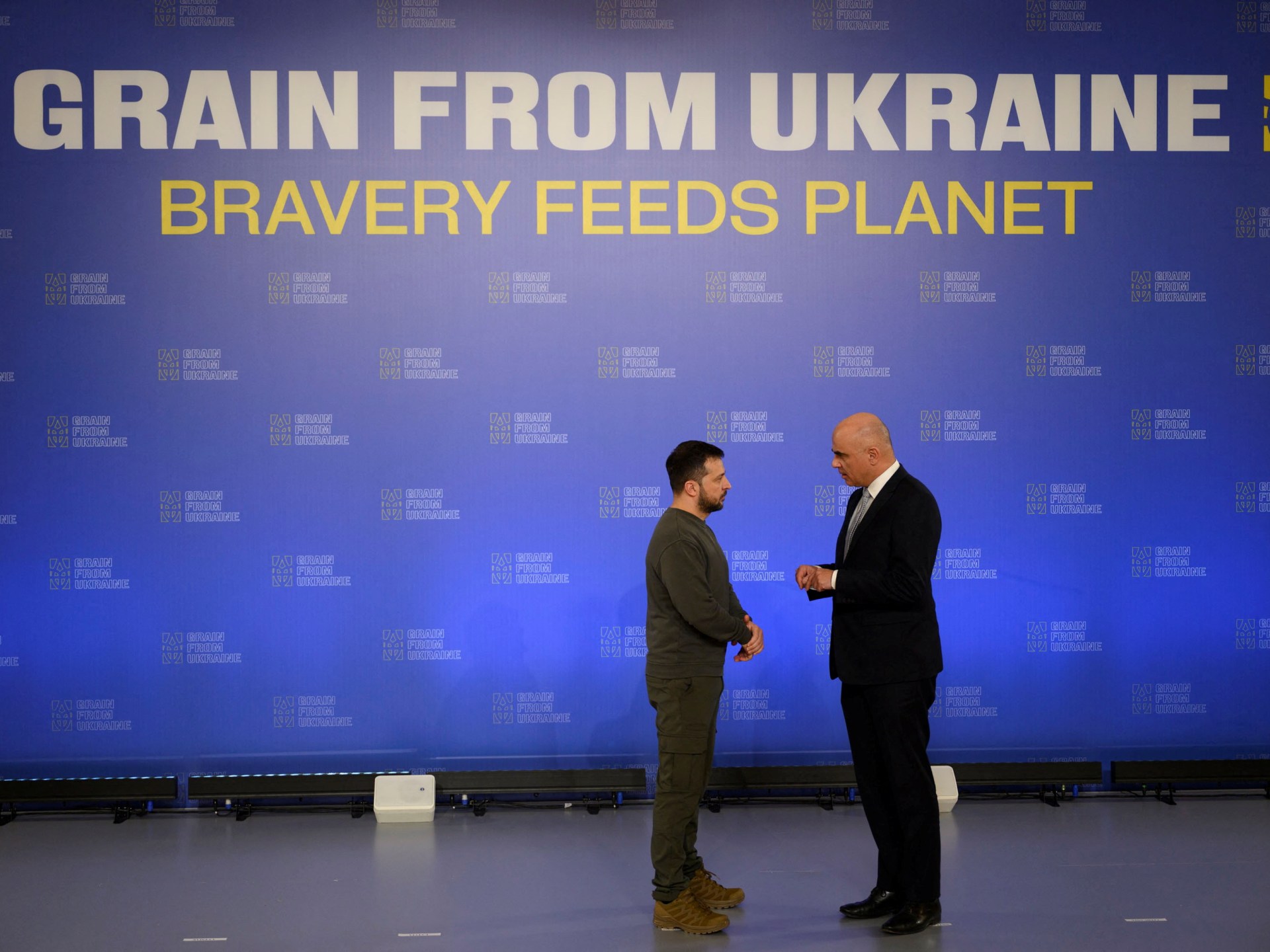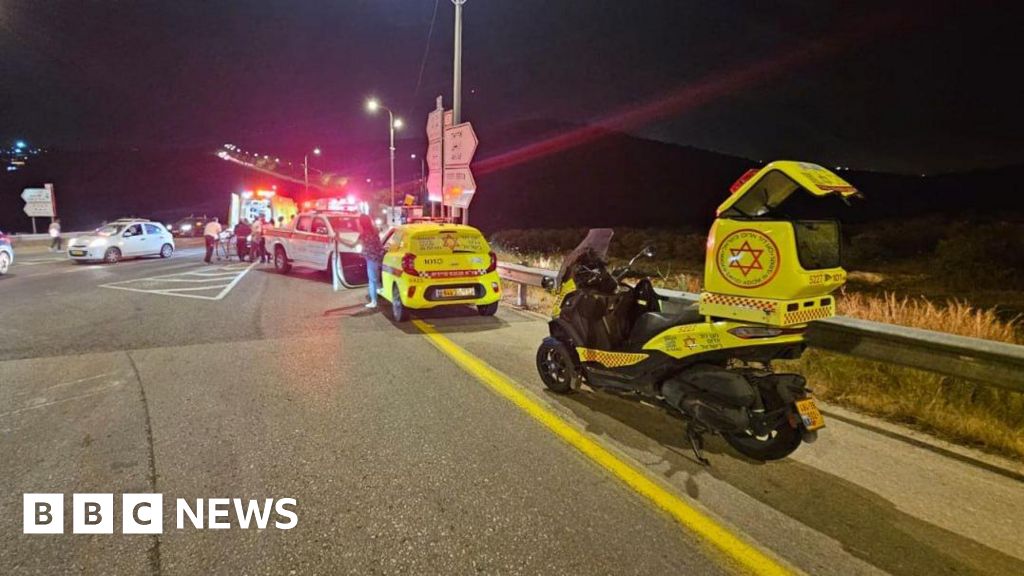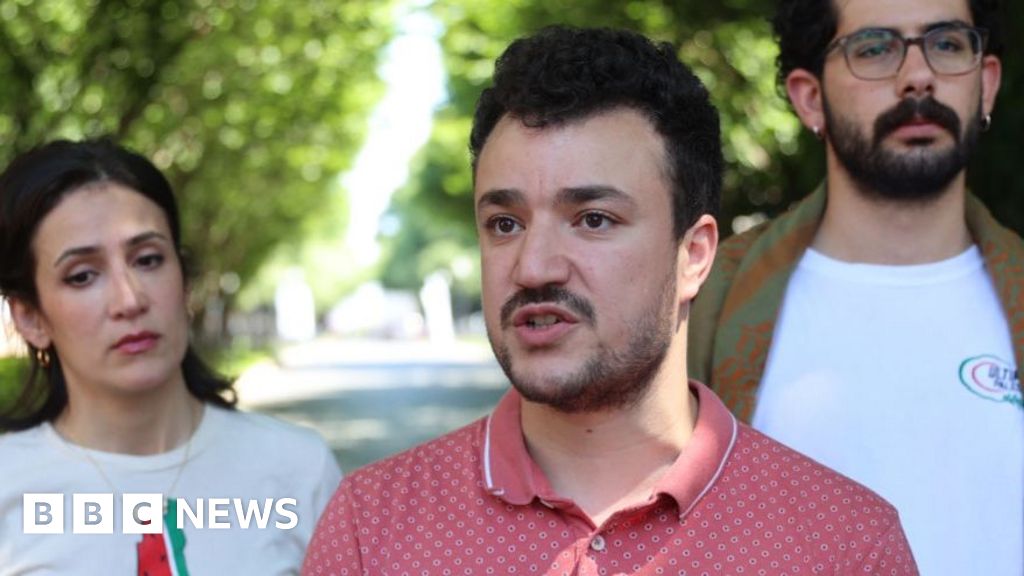Putin waged a trade war long before bombing Ukraine. Which side is winning? | Russia-Ukraine war News
Last year, Russian President Vladimir Putin announced he was shutting down the Black Sea to Ukrainian agricultural exports.
The reason, ostensibly, was Ukraine’s second attempt to cripple the Kerch Bridge, Russia’s main artery to the Crimean Peninsula and key to its ammunition logistics.
A massive explosion caught on camera in the small hours of July 17 left a section of road deck hanging askew over the Black Sea.
In December, the head of Ukraine’s Security Service (SBU), Vasyl Malyuk, confirmed the SBU had developed the Sea Baby drones used in the operation.
In retaliation, Russia said it was withdrawing from an agreement allowing the shipment of Ukrainian grain out of the Black Sea, brokered a year earlier by the United Nations and Turkey to prevent hunger among the world’s poorest.
Marking its withdrawal, Moscow launched an overnight missile attack on Ukraine’s Odesa and Chernomorsk, two of the three ports authorised to export grain under the initiative, destroying grain silos, fuel oil and loading equipment.
Two days later, Putin revealed the real reason for his change in strategy.
In a staged conversation with his agriculture minister, Dmitry Patrushev, Putin said Russian farmers had lost $1.2bn and Russian fertiliser manufacturers $1.6bn, roughly half their profit margins, due to high costs for shipping, spare parts and financial transactions.
Ukraine, too, has suffered from higher shipping costs stemming from Putin’s war and the conflict in Gaza, which has forced commercial shipping to detour around Africa.
But Putin and Patrushev blamed the increase solely on Western sanctions.
According to Putin, Russia showed “miracles of endurance and patience” hoping that its foreign colleagues would finally begin to “fully comply with the agreed and approved parameters and conditions”. Instead, Russia reaped “arrogance and impudence, promises and empty chatter”, he said.
Although the West never sanctioned Russian grain or fertiliser, Putin’s argument was that sanctions on Russian banks and machinery imports effectively sanctioned agricultural industries.
He also believed 200,000 tonnes of Russian fertiliser were being unofficially blocked in European ports.
Russia sought to leverage Black Sea security to overturn Kyiv’s sanctions, as well.
“He wants the fertiliser pipeline through Odesa to be reopened,” Kyiv School of Economics Director Tymofiy Mylovanov told Al Jazeera, referring to a pipeline built in 1981, when Ukraine was part of the Soviet Union, to carry ammonia from the TogliattiAzot plant 500km (311 miles) east of Moscow to Odesa for export.
A blast disabled the defunct pipeline last June. Russia accused Ukraine of sabotage.
“There is no way Ukraine will reopen any kind of transit through Ukraine of any kind of Russian products,” Mylovanov said. “Russia is in a full-scale war with us and they want to trade through us. This is just not possible.”
Russia’s very reason for agreeing to the grain initiative was to slow down Ukrainian exports, believed Mylovanov.
Under the initiative Russia was entitled to inspect grain ships, but average daily inspections had fallen from 11 to five by early last year, said the UN, causing Ukrainian exports to fall from 4.3 million tonnes in October to 1.3 million tonnes in May.
This was merely the latest tactic in a trade war that long predated Russia’s ground war, said Mylovanov.
“Putin started placing … barriers to trade on Ukrainian agricultural products from grain to dairy as early as 2012,” he said. Russia “would impose certain tariffs and they would abandon them arbitrarily”.
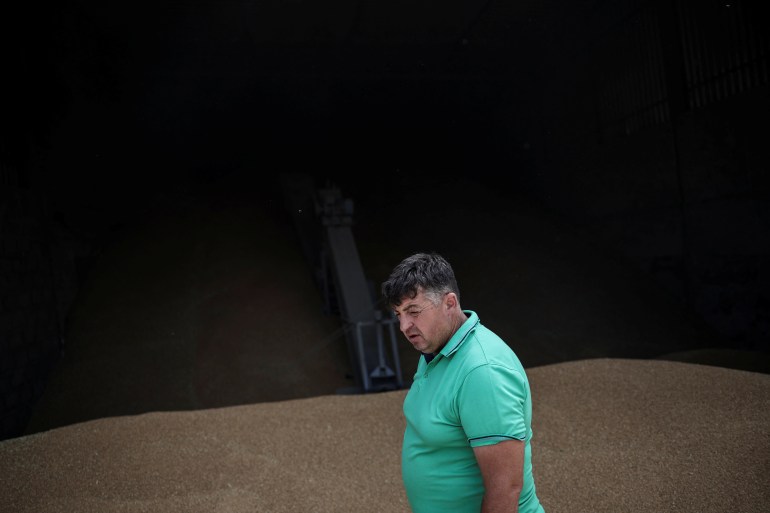
In doing this, Putin was weaponising uncertainty “to paralyse decision-making in agricultural companies and to deny investment in the capacity,” Mylovanov said.
The construction of the Kerch Bridge may have been part of this trade war.
The bridge “basically denied high-volume tankers [access] so Azov Sea ports became unavailable to Ukraine in 2016-2019. We had to rebuild our railroad routes to pass through Odesa, so farmers in the east were hurt by this”, he said.
None of Putin’s tactics seemed to work. Ukraine’s goods, mainly agricultural, were becoming ever-more competitive with Russia’s. Exports rose from $33.5bn in 2016 to $63.1bn in 2021, World Bank data showed.
Only the full-scale invasion changed that.
Putin’s war cost the Ukrainian economy 29 percent of gross domestic product (GDP) and 14 percent of its population. Its goods exports plummeted to $40.1bn.
But Ukraine’s agriculture is now bouncing back, with a record harvest of 80 million tonnes – 58 million tonnes of it was grain. Russia harvested more than twice as much grain – 123 million tonnes – but its landmass is 28 times greater than Ukraine’s and its population five times greater. Ukraine is punching way above Russia’s weight.
That is important because rising agricultural exports may now represent Ukraine’s best hope of prosecuting the war.
Kyiv faces a gaping budget deficit of $43bn this year, which financial aid will only partly address and faces political hurdles in Brussels and Washington. Kyiv needs to maximise export revenues, and Russia is trying to starve it.
“Ukraine, as today’s events show, cannot rely only on international grants and loans. You have to earn money yourself,” Odesa newspaper editor Oleg Suslov told Al Jazeera.
“Russia understands this, too. Its desire to destroy the port infrastructure is aimed at reducing the flow of export earnings to Ukraine in the hope that this will destabilise the domestic economic situation and sow panic among the population,” he said.
The longer-term strategy is geopolitical, said Mylovanov.
“They want to get Ukraine off the market so … they can get monopoly positions and they can later weaponise or politicise them. For the Middle East, a lot of concerns are food security … If your major trading partner is just Russia, then they have some leverage.”
Russia tries to enforce its embargo
In addition to attacking Ukraine’s Black Sea ports, Russia sent drones and missiles to destroy cranes and silos at Ukraine’s Danubian ports of Reni, Izmail and Vylkove, and damaged trucks at the ferry crossing of Orlivka.
“In this way, Russia tried to demonstrate that it did not agree with the opening of a new grain corridor without its participation,” said Suslov.
According to estimates by the Ukrainian government, from August to the end of 2023, Russia completely or partially destroyed about 180 port infrastructure facilities and 300,000 tonnes of grain.
“To top it all off, Russia began to mine the sea channel [from Ukraine’s ports to Romania] with adjustable aerial bombs,” said Suslov.
Russia also tried coercion.
It fired warning shots at the Palau-flagged Sukru Okan, a merchant vessel, on August 14, as it tried to approach the Romanian port of Sulina – a major offloading point for freight floating down the Danube. When that did not work, it boarded it using a Ka-29 helicopter.
With its financial lifeline at stake, Ukraine pushed back against Russia’s embargo with astounding success.
On August 4, its naval drones attacked the Olenegorsky Gornyak, a Ropucha-class landing ship, just outside Novorossyisk harbour, supposedly a safe port to which Russia had relocated much of its Sevastopol-based fleet after Ukraine sank its Black Sea flagship in May.
Daylight footage showed the Olenegorsky Gornyak listing severely to port as it was towed into harbour. The following night, Ukraine put a hole in the engine room of a Russian fuel tanker just south of the Kerch Bridge.
Since both of these attacks happened off Russia’s Black Sea coast, they proved Ukraine’s claim that it could bottle up Russia’s Black Sea Fleet, deny Russia access to its territorial waters and provide a safe corridor for freight shipping until it reached NATO territorial waters off Romania and Bulgaria.
When a German container ship, the Joseph Schulte, along with four other merchant ships, travelled safely from Ukrainian ports to Istanbul on August 15-17, Ukraine hailed it as proof of the naval operation’s success.
By the end of 2023, Ukraine had exported 15 million tonnes of goods through the corridor, two-thirds of them agricultural, in the six months since the deal with Russia collapsed, compared with 33 million tonnes for the entire year that the deal was in place. In other words, Russia’s departure from the Black Sea grain initiative has had virtually no impact.
And Ukraine has not relied on the Black Sea alone. Last August, it opened a new border crossing to Romania along the Tisa River, with more to follow.
In October, Ukrainian president Volodymyr Zelenskyy announced a new export route via rail through Moldova and Romania. Since its NATO airspace was immune to Russian attacks, Romania also suggested offloading grain at its Danubian ports of Braila and Galati onto barges that would take it to the port of Constanta on the Black Sea, where it can be reloaded onto ocean-going ships.
Constanta’s port authority said it had reached its highest grain exports last year thanks to Ukrainian grain.
Russia did not admit defeat. It attacked ships with missiles to drive up freight rates.
One such attack on a Liberian-flagged tanker last November killed a sailor and raised rates by $20 a tonne overnight. The United Kingdom came to the rescue, negotiating with 14 shipping insurance companies a special mechanism to discount war risk insurance.
Ukraine still isn’t out of the cornfield.
Its truck convoys to European Union ports have encountered local opposition from farmers and truckers, who face competition from cheaper Ukrainian goods and services. Ukraine’s success in exporting grains has allowed world prices to drop, making it a victim of its own success. Ukraine’s wheat farmers were operating at a loss of $36 a tonne, Ukraine’s agriculture ministry said. And the onset of winter may bring mechanical and weather-related problems to export capacity.
Still, Ukraine’s increasing share of the global market means it is winning against Russia’s trade war despite the embargo. Ukraine’s agriculture ministry said its overall exports last year were 7 percent higher in value compared with 2022, reaching $23bn, and its grain exports increased from 37 million tonnes to 43 million tonnes.
“[Ukraine] has become a competitive player and if you look at the evolution of the share of global exports, Ukraine used to have 1-2 percent, and now in the top five grains it has 5, 8 sometimes 13 percent,” said Mylovanov.
The results may affect Ukrainian optimism. “Many thought that the war would end in 2023,” said Suslov.
“However, there is hope. Ukrainians believe in their Armed Forces, they believe in air defence. They believe in the support of partners. And they hope that the losses in manpower and military equipment that Russia received by the end of the second year of the war will finally reach those critical values that will force the aggressor to come to their senses and stop the massacre.”
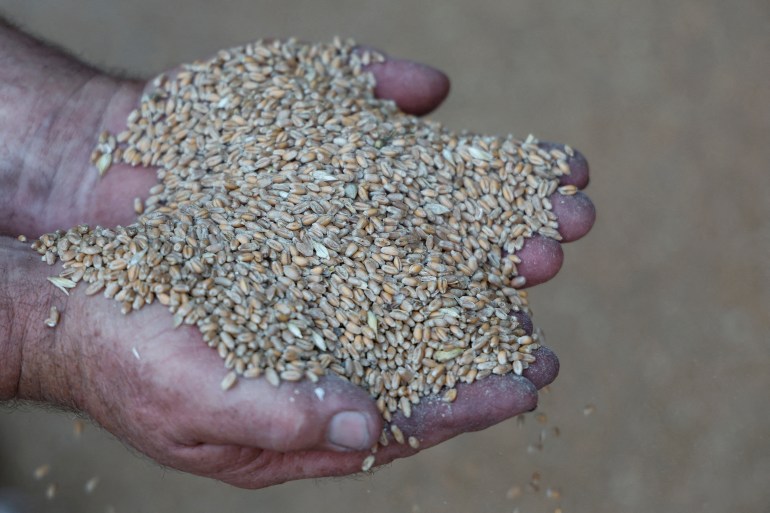
Check out our Latest News and Follow us at Facebook
Original Source

